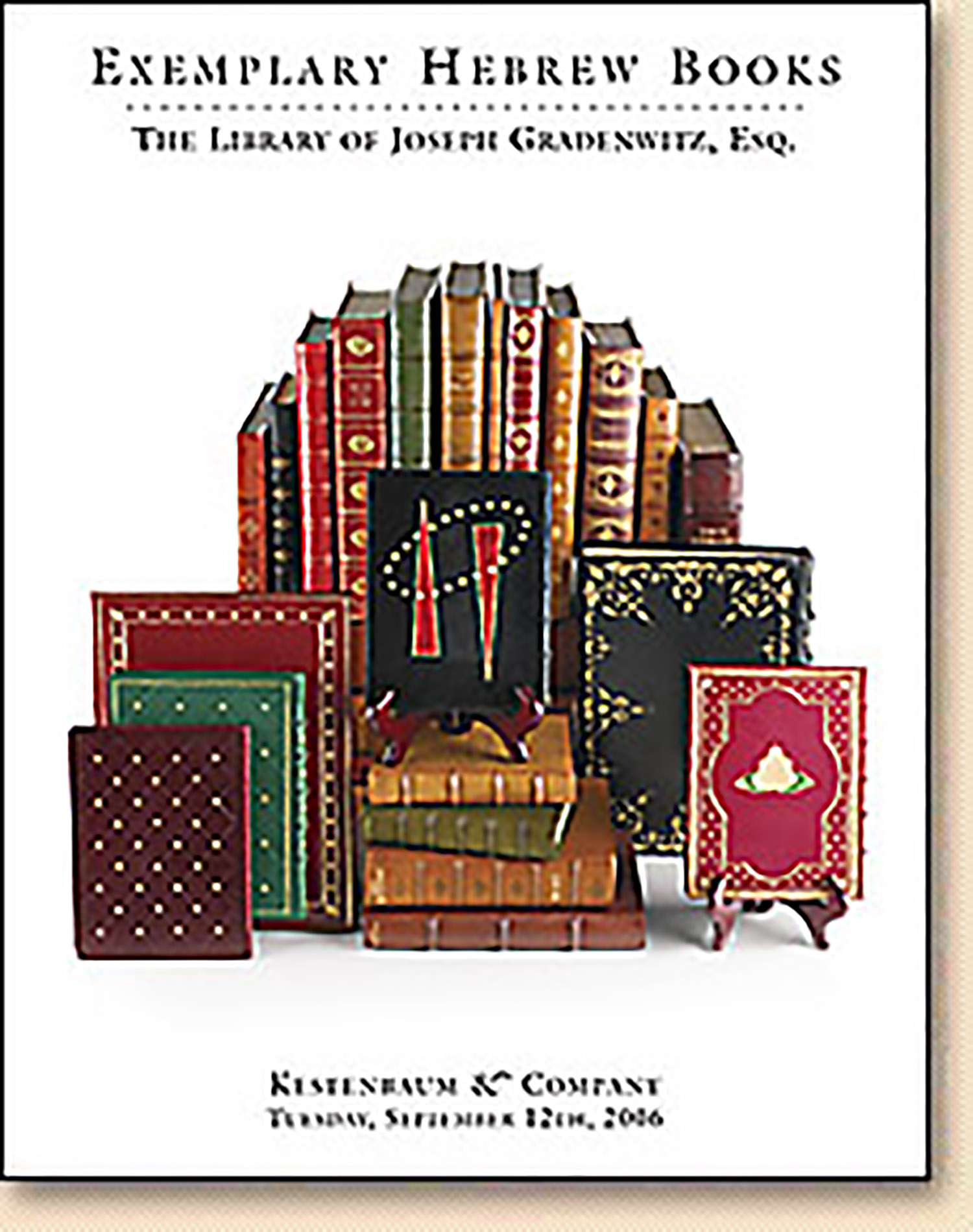(TRADITIONALLY ATTRIBUTED TO. Publicized by R. Moses b. Shem Tov de Leon). Sepher ha-Zohar [“The Book of Splendor”]

AUCTION 34 |
Tuesday, September 12th,
2006 at 1:00
Exemplary Hebrew Books: The Library of Joseph Gradenwitz, Esq.
Lot 137
SHIMON B”R YOCHAI
(TRADITIONALLY ATTRIBUTED TO. Publicized by R. Moses b. Shem Tov de Leon). Sepher ha-Zohar [“The Book of Splendor”]
Mantua: Meir b. Ephraim of Padua and Jacob ben Naphtali Hakohen of Gazzuolo 1558-60
Est: $10,000 - $15,000
PRICE REALIZED $25,000
First Edition of the Bible of Jewish Mysticism.
The most sacred and influential of all Kabbalistic works, the Zohar is the preeminent classic of world mystical literature, a quest for Divine unity and a search for insight into the mysteries of the Torah. A textually inferior but more esthethic reprint by Vincenzo Conti of Cremona immediately followed this Mantua edition (see next Lot). Kabbalists such as R. Moses Zacuto (Rama”z), doyen of Italian kabbalists, more highly esteemed the Mantua edition for its precision, and eventually, the pagination of the Mantua edition became the standard.
It is necessary to place the printing of the Zohar - first in Mantua in 1558, and a year later in Cremona - in proper historical context in order to appreciate how truly momentous was the decision to make public the teachings of the esoteric Kabbalah at precisely this nexus.
In 1553, the Talmud was publicly burned in Italy by state order. The immediate aftermath of that tragic event was a new interest on the part of Jews in secular knowledge and philosophy. To stem the tide of secularization, some rabbis felt such times called for making available to the public for the first time - through the mass medium of printing - the hidden wisdom of Israel, the Kabbalah, first and foremost the Zohar. But others opposed this radical departure from the tradition of only allowing esoteric teachings to circulate in manuscript form. Furthermore, they feared that the combined effect of an absence of Talmudic texts and a proliferation of Kabbalistic texts would produce a Jew, ignorant of Jewish law and steeped in Jewish mysticism. These underlying tensions are reflected in the Proofreader’s Introduction to the Mantua edition of the Zohar. The Pesak of the Gaon R. Isaac de Lattes, printed at the beginning of this edition, was the watershed decision which permitted the publication of the Zohar. (One of the arguments De Lattes utilized was that increased study of the Zohar would hasten the long-awaited Redemption.) In many later halachic discussions of the issue it is stated that De Lattes authorized the publication provided the edition would appear in Rashi script, making the text somewhat less accessible to the public.
See S. Assaf, “Le-Polemos al Hadpasat Sifrei Kabbalah,” Sinai 5 (1939), pp. 360-368; I. Tishby, Mishnath ha-Zohar, Vol. I (1949), pp. 108-110; A.Yaari, "The Burning of the Talmud in Italy" in idem, Mechkarei Sepher (1958), pp. 216-219; M. Benayahu, Ha-Defuss ha-Ivri bi-Cremona (1971), pp. 121-137; S. Simonsohn, History of the Jews in the Duchy of Mantua (1977), pp. 630-632; D. Amram, The Makers of Hebrew Books in Italy (1963), pp. 325-27; Carmilly-Weinberger, Censorship and Freedom of Expression in Jewish History (1977), pp. 53-55; The Zohar, Pritzker Edition (2004); Heller, The Sixteenth Century Hebrew Book I (2004), pp. 484-5; EJ, Vol. XVI, col. 1212
